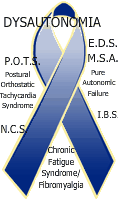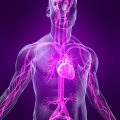Table of Contents
Dysautonomia is a term used to describe many different medical conditions that involves the autonomic nervous system. Despite being unfamiliar for many, this umbrella term affects more than 70 million people around the world. In this entry, we will go deeper to the definition of dysautonomia and its different types.
Dysautonomic comes in different forms, all of which involves ANS (autonomic nervous system) dysfunction; and usually manifests in the failure of sympathetic or parasympathetic components of ANS. In rare instances, this condition happens due to overactive ANS.
The Autonomic Nervous System is part of nervous system which coordinates unconscious homeostatic operations; such as bodily activities that automatically being carried out without the input of the higher brain centers.
Basically, the ANS is what is responsible for keeping a constant internal temperature, maintain steady blood pressure; normal breathing patterns, correct dilation of pupil, sexual arousal and excretion. Therefore, dysautonomia symptoms occur as faults in those specific functions and areas of physiology.
There are different sub-types of dysautonomia, and symptoms may vary from the subtype. The most common symptoms however, are abnormal heart rate, fainting, lightheadedness, and unstable blood pressure. In more serious cases, seemingly simple diseases like acute respiratory failure, pneumonia, or sudden cardiopulmonary disease can lead to death.
Unfortunately, medical scientists are yet to fully understand dysautonomia, and there are still no cures for it. There are however, various medications and interventions one can use to ease its symptoms. Also, dysautonomia may be a secondary condition to another disease.
Also, it is important to note that dysautonomia can also develop as a consequence of other diseases; such as celiac disease, diabetes, multiple sclerosis; Sjögren’s syndrome, rheumatoid arthritis, Parkinson’s disease, and lupus.
Two Most Common Sub types of Dysautonomia
Dysautonomia has 15 sub types, ranging from common to rare. Neurocardiogenic Syncope and Postural Orthostatic Tachycardia Syndrome are its two most common sub types.
Neurocardiogenic Syncope (NCS)
NCS is one of the two most common types of dysautonomia, affecting millions of people around the world.
When we stand, gravity affects our body by pulling blood down to our lower extremities. This results to partial drainage of blood to thorax from the head. In healthier individuals, the ANS will increase vascular tone, cardiac output, and heart rate to counteract such changes.
People suffering from NCS will not have this body mechanism; their brain is deprived of oxygen-carrying blood, causing them to faint. Severity of this condition of course, varies from one person to the next; some may experience one fainting episode, while other may find it hard to function normally due to regular episodes.
Postural Orthostatic Tachycardia Syndrome (POTS)
POTS is also another common type of dysautonomia, as experts estimate it affects 1% of all the teenagers in United States. That means somewhere around 1 to 3 million people are affected by POTS; and research shows it is 5 times more prevalent among females than males.
POTS is not a disease, rather, it is a syndrome, which means it is caused by a different underlying medical condition. Though it is usually difficult to point out. As well as multiple sclerosis, genetic abnormalities/disorders, mitochondrial disease, pneumonia, toxicity caused by alcoholism, heavy-metal poisoning; or chemotherapy, autoimmune disease such as lupus; Sjögren’s syndrome and sarcoidosis, antiphospholipid syndrome, vitamin deficiency like anemia, vaccination, etc.
Its symptoms include chest pain, shaking, shortness of breath, fainting or lightheadedness, sensitivity to temperature; abnormally fast heart rate (tachycardia), and gastrointestinal upset.






 I love to write medical education books. My books are written for everyone in an easy to read and understandable style.
I love to write medical education books. My books are written for everyone in an easy to read and understandable style.